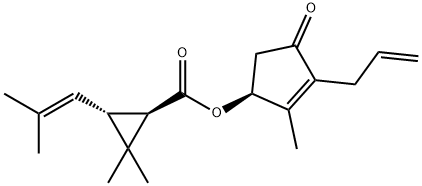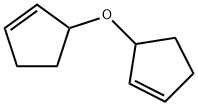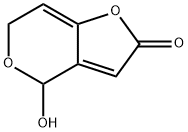Allyl ether
Synonym(s):Diallyl ether
- CAS NO.:557-40-4
- Empirical Formula: C6H10O
- Molecular Weight: 98.14
- MDL number: MFCD00008650
- EINECS: 209-174-4
- SAFETY DATA SHEET (SDS)
- Update Date: 2025-01-27 09:38:02

What is Allyl ether?
Chemical properties
clear colorless liquid
The Uses of Allyl ether
Allyl Ether is a modifier used in the manufacture of foamable polystyrene.
What are the applications of Application
Allyl ether is an ether-containing compound used for proteomics research
General Description
A liquid with an odor of radishes. Less dense than water. Flash point 20°F. May be toxic by ingestion, skin absorption, and inhalation, and may irritate skin and eyes. Vapors heavier than air. Used to make other chemicals.
Air & Water Reactions
Highly flammable. Soluble in water. Oxidizes readily in air to form unstable peroxides that may explode spontaneously [Bretherick, 1979 p.151-154].
Reactivity Profile
Ethers, such as DIALLYLETHER can act as bases. They form salts with strong acids and addition complexes with Lewis acids. The complex between diethyl ether and boron trifluoride is an example. Ethers may react violently with strong oxidizing agents. In other reactions, which typically involve the breaking of the carbon-oxygen bond, ethers are relatively inert.
Health Hazard
TOXIC; may be fatal if inhaled, ingested or absorbed through skin. Inhalation or contact with some of these materials will irritate or burn skin and eyes. Fire will produce irritating, corrosive and/or toxic gases. Vapors may cause dizziness or suffocation. Runoff from fire control or dilution water may cause pollution.
Fire Hazard
HIGHLY FLAMMABLE: Will be easily ignited by heat, sparks or flames. Vapors may form explosive mixtures with air. Vapors may travel to source of ignition and flash back. Most vapors are heavier than air. They will spread along ground and collect in low or confined areas (sewers, basements, tanks). Vapor explosion and poison hazard indoors, outdoors or in sewers. May polymerize explosively when heated or involved in a fire. Runoff to sewer may create fire or explosion hazard. Containers may explode when heated. Many liquids are lighter than water.
Safety Profile
Poison by ingestion. Moderately toxic by skin contact. A skin and eye irritant. A dangerous fire hazard when exposed to heat, flame, or oxidzing materials. To fight fire, use alcohol foam. Reacts with air to form explosive peroxides. Violent explosions have occurred during distillation. When heated to decomposition it emits acrid smoke and fumes. See also ALLYL COMPOUNDS and ETHERS.
Toxicology
Diallyl Ether smells like horseradish and severely irritates the mucous membranes; the LD50 is approximately 270 mg/kg (rat, oral). Diallyl ether is absorbed easily through the skin; the LD50 is 540 mg/kg (rabbits, dermal, estimate).
Synthesis
Allyl ether is produced by dehydration of Allyl alcohol.
Properties of Allyl ether
| Melting point: | -6°C |
| Boiling point: | 94 °C |
| Density | 0.803 g/mL at 25 °C(lit.) |
| refractive index | 1.415-1.417 |
| Flash point: | -7 °C |
| storage temp. | Refrigerator (+4°C) + Flammables area |
| solubility | Chloroform, Methanol (Slightly), 0.3% soluble in water, miscible with alcohol and oils. |
| form | clear liquid |
| color | Colorless to Almost colorless |
| Odor | Pungent odor, reminiscent of Radish |
| Water Solubility | insoluble |
| Merck | 14,292 |
| CAS DataBase Reference | 557-40-4(CAS DataBase Reference) |
| NIST Chemistry Reference | (CH2=CHCH2)2O(557-40-4) |
| EPA Substance Registry System | 1-Propene, 3,3'-oxybis- (557-40-4) |
Safety information for Allyl ether
| Signal word | Danger |
| Pictogram(s) |
 Flame Flammables GHS02  Skull and Crossbones Acute Toxicity GHS06 |
| GHS Hazard Statements |
H225:Flammable liquids H311:Acute toxicity,dermal H315:Skin corrosion/irritation H319:Serious eye damage/eye irritation H335:Specific target organ toxicity, single exposure;Respiratory tract irritation |
| Precautionary Statement Codes |
P210:Keep away from heat/sparks/open flames/hot surfaces. — No smoking. P280:Wear protective gloves/protective clothing/eye protection/face protection. P301+P312:IF SWALLOWED: call a POISON CENTER or doctor/physician IF you feel unwell. P303+P361+P353:IF ON SKIN (or hair): Remove/Take off Immediately all contaminated clothing. Rinse SKIN with water/shower. P305+P351+P338:IF IN EYES: Rinse cautiously with water for several minutes. Remove contact lenses, if present and easy to do. Continuerinsing. |
Computed Descriptors for Allyl ether
Related products of tetrahydrofuran








You may like
-
 Allyl Ether CAS 557-40-4View Details
Allyl Ether CAS 557-40-4View Details
557-40-4 -
 Allyl ether CAS 557-40-4View Details
Allyl ether CAS 557-40-4View Details
557-40-4 -
 37951-47-6 3'-Benzyloxy propiophenone, 98% 99%View Details
37951-47-6 3'-Benzyloxy propiophenone, 98% 99%View Details
37951-47-6 -
 99-30-9 99%View Details
99-30-9 99%View Details
99-30-9 -
 104944-18-5 99%View Details
104944-18-5 99%View Details
104944-18-5 -
 3'-Methoxypropiophenone, 99% 37951-49-8 99%View Details
3'-Methoxypropiophenone, 99% 37951-49-8 99%View Details
37951-49-8 -
 694-48-4 99%View Details
694-48-4 99%View Details
694-48-4 -
 51364-51-3 99%View Details
51364-51-3 99%View Details
51364-51-3